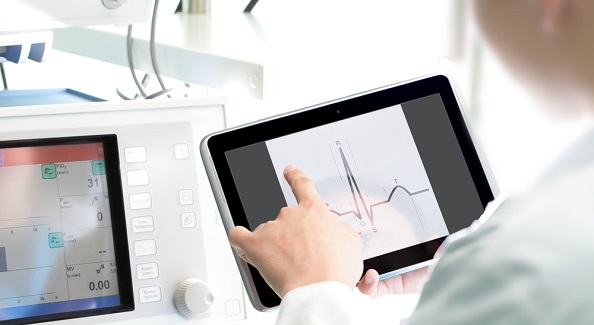How Has Healthcare Changed in the Last 10 Years? [Infographic]

Heathcare has changed dramatically over the last ten years, primarily due to emerging technologies and the digitization of the patient experience. Doctors in Copenhagen are now able to perform surgery on a patient in Istanbul; electronic medical records can be sent immediately to a surgeon in the case of an emergency; and “smart fashion” can now monitor our exercise habits and what we eat. Take a look at the biggest changes to the patient experience below, and read through our infographic to learn how digital healthcare is changing the way we get well.
Electronic Records
More important than you might expect, the revolution of electronic medical records has made it easy for doctors to disseminate patient information to one another and reduce the number of lost records. Instead of individual doctors and specialists holding one piece of a larger puzzle, they may now share information seamlessly, leading to better patient care.
Telemedicine
Predicted by the great science-fiction writer Arthur C. Clarke in 1964 to arrive by the year 2000, telemedicine didn’t become readily available until 2010, but it’s still one of the great digital changes to medicine. Patients in remote regions, or patients who are immobile, can now have doctor access 24/7 through video chat technology. Doctors may prescribe medications through this technology, and even, in special cases, operate on a patient from across the world with the use of robotics.
Remote Monitoring
One of the biggest changes to patient care, remote monitoring allows patients to head home after a procedure earlier than ever, reducing the cost of care for both the patient and the hospital. Patients are free to heal in a more comfortable space, with the assurance that doctors are monitoring their healing via small digital implants. This technology allows patients to be treated more efficiently and return to their lives more quickly.
Wearable Technology
Taking a study of high fashion, today’s health wearables are slicker and better designed than ever before. These devices can monitor your overall health and vital signs, and record the amount of exercise and the things you eat every day, leading to more efficient exercise routines and a better diet. Reaching near fad-levels of public consumption, wearable technology like the Fitbit have helped millions of Americans lead a better, healthier lifestyle.
Wireless Communication
Wireless communication has made a huge difference in hospital infrastructure, including the monitoring of patients as they’re moved from pre to post-op. No longer do hospital staff and care professionals have to worry about the confining mess of ethernet cords and the danger of unplugging a patient’s monitoring devices. Wireless communications allows hospitals to function more effectively, providing better all-around patient care.
Take a look at our infographic below to learn more about emerging digital health careers, and for more information, browse our Careers Page to find the right career in the medical and technology fields for your aspirations.

Add a comment